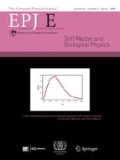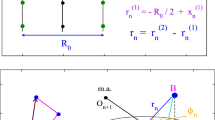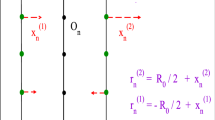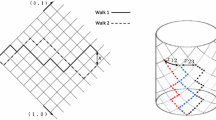Abstract.
We study the elastic behaviour of a supercoiled DNA molecule. The simplest model is that of a rod-like chain, involving two elastic constants, the bending and the twist rigidities. Writing this model in terms of Euler angles, we show that the corresponding Hamiltonian is singular and needs a small distance cut-off, which is a natural length scale giving the limit of validity of the model, of the order of the double-helix pitch. The rod-like chain in the presence of the cut-off is able to reproduce quantitatively the experimentally observed effects of supercoiling on the elongation-force characteristics, in the small supercoiling regime. An exact solution of the model, using both transfer matrix techniques and its mapping to a quantum mechanics problem, allows to extract, from the experimental data, the value of the twist rigidity. We also analyse the variation of the torque and the writhe-to-twist ratio versus supercoiling, showing analytically the existence of a rather sharp crossover regime which can be related to the excitation of plectoneme-like structures. Finally we study the extension fluctuations of a stretched and supercoiled DNA molecule, both at fixed torque and at fixed supercoiling angle, and we compare the theoretical predictions to some preliminary experimental data.
Similar content being viewed by others
Author information
Authors and Affiliations
Additional information
Received 1 April 1999 and Received in final form 4 January 2000
Rights and permissions
About this article
Cite this article
Bouchiat, C., Mézard, M. Elastic rod model of a supercoiled DNA molecule. Eur. Phys. J. E 2, 377–402 (2000). https://doi.org/10.1007/s101890050020
Issue Date:
DOI: https://doi.org/10.1007/s101890050020




